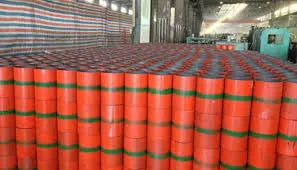- Afrikaans
- Albanian
- Amharic
- Arabic
- Armenian
- Azerbaijani
- Basque
- Belarusian
- Bengali
- Bosnian
- Bulgarian
- Catalan
- Cebuano
- Corsican
- Croatian
- Czech
- Danish
- Dutch
- English
- Esperanto
- Estonian
- Finnish
- French
- Frisian
- Galician
- Georgian
- German
- Greek
- Gujarati
- Haitian Creole
- hausa
- hawaiian
- Hebrew
- Hindi
- Miao
- Hungarian
- Icelandic
- igbo
- Indonesian
- irish
- Italian
- Japanese
- Javanese
- Kannada
- kazakh
- Khmer
- Rwandese
- Korean
- Kurdish
- Kyrgyz
- Lao
- Latin
- Latvian
- Lithuanian
- Luxembourgish
- Macedonian
- Malgashi
- Malay
- Malayalam
- Maltese
- Maori
- Marathi
- Mongolian
- Myanmar
- Nepali
- Norwegian
- Norwegian
- Occitan
- Pashto
- Persian
- Polish
- Portuguese
- Punjabi
- Romanian
- Russian
- Samoan
- Scottish Gaelic
- Serbian
- Sesotho
- Shona
- Sindhi
- Sinhala
- Slovak
- Slovenian
- Somali
- Spanish
- Sundanese
- Swahili
- Swedish
- Tagalog
- Tajik
- Tamil
- Tatar
- Telugu
- Thai
- Turkish
- Turkmen
- Ukrainian
- Urdu
- Uighur
- Uzbek
- Vietnamese
- Welsh
- Bantu
- Yiddish
- Yoruba
- Zulu
what is the difference between casing and tubing?
Understanding the Difference Between Casing and Tubing in Oil and Gas Wells
In the oil and gas industry, casing and tubing are two crucial components used in drilling operations. Both play essential roles in ensuring the integrity and efficiency of the well, but they serve different purposes and have distinct characteristics. Understanding the differences between them is vital for anyone involved in or studying the oil and gas sector.
Casing The Structural Framework
Casing refers to the series of large diameter pipes that are installed in the drilled wellbore. Once the drilling operation has reached the desired depth and the geological formations have been penetrated, casing is inserted to support the walls of the well and prevent collapses. There are several types of casing, including surface casing, intermediate casing, and production casing, each designed for specific sections of the well and different geological conditions.
The main functions of casing include
1. Structural Support Casing stabilizes the wellbore and protects it from the geological pressures that surround it.
2. Fluid Seal It prevents the escape of fluids from the well into the surrounding formations, thus protecting freshwater aquifers and preventing contamination.
3. Well Integrity Casing provides the necessary barrier to prevent blowouts and other hazardous incidents that could occur due to the high pressures found in oil and gas formations.
Casing is typically made from steel and can be quite thick, with a variety of specifications depending on the pressures and conditions of the well.
what is the difference between casing and tubing?

Tubing The Production Pipeline
In contrast, tubing is a smaller diameter pipe that is used to transport the oil or gas from the reservoir to the surface after the well has been completed. Once the well is drilled and appropriately cased, tubing is installed inside the casing. Tubing is designed to withstand the pressures of the fluids being produced and is often more flexible than casing, allowing it to accommodate changes in pressure and temperature.
The primary roles of tubing include
1. Production Tubing serves as the main conduit for transporting hydrocarbons from the reservoir to the surface.
2. Pump Installation It provides a pathway for various downhole equipment, including pumps used to enhance production.
3. Pressure Management Tubing can manage the pressure within a well, allowing for controlled extraction of oil and gas.
Key Differences
In summary, the main differences between casing and tubing lie in their purpose and design. Casing provides structural support and acts as a protective barrier for the wellbore, while tubing is focused on the actual transport of hydrocarbons to the surface. Casing is larger and thicker, designed to withstand external pressures, while tubing is smaller and more adaptable to the conditions found within the well.
Understanding these differences is crucial for engineers and workers involved in the drilling and production processes. Proper selection and installation of casing and tubing can significantly impact the safety, efficiency, and productivity of oil and gas operations. In essence, casing and tubing work together to form a comprehensive system that allows for the successful extraction of valuable resources from deep within the Earth.
-
Tubing Pup Joints: Essential Components for Oil and Gas OperationsNewsJul.10,2025
-
Pup Joints: Essential Components for Reliable Drilling OperationsNewsJul.10,2025
-
Pipe Couplings: Connecting Your World EfficientlyNewsJul.10,2025
-
Mastering Oilfield Operations with Quality Tubing and CasingNewsJul.10,2025
-
High-Quality Casing Couplings for Every NeedNewsJul.10,2025
-
Boost Your Drilling Efficiency with Premium Crossover Tools & Seating NipplesNewsJul.10,2025







